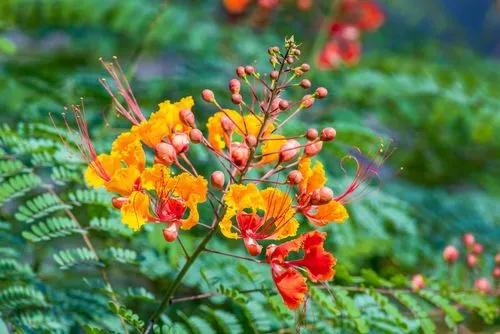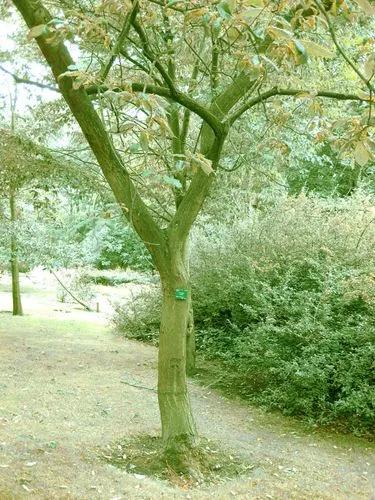The Kentucky coffeetree, Gymnocladus dioicus,[4] is a tree in the subfamily Caesalpinioideae of the legume family Fabaceae, native to the Midwest and Upper South of North America. The seed may be roasted and used as a substitute for coffee beans; however, unroasted pods and seeds are toxic. The wood from the tree is used by cabinetmakers and carpenters. It is planted as a street tree.
Kentucky Coffee Tree Care
Gymnocladus Dioica
Other names: Kentucky Coffeetree, Stump Tree, Chicot, Gymnocladus Dioicus



Gymnocladus dioica, commonly called Kentucky coffeetree or coffeetree, is a tall deciduous tree with rough, scaly gray-brown bark and large bipinnate compound leaves. It is native to the Midwest, primarily southern Michigan and Ohio southwest to Iowa, Kansas, Oklahoma and Arkansas. It grows 60-80’ (less frequently to100’) tall with an irregular open oval to obovate crown. In Missouri, it typically occurs in low or rich woods, bluff bases and along streams (Steyermark). Large leaves to 3’ long, divided into 3-7 pairs of pinnae, with individual leaflets (1-3” long). Leaflets are blue-green in summer, turning an undistinguished yellow in fall. Larger trees typically cast light shade. As the specific epithet suggests, the species is dioecious (separate male and female trees). Greenish white flowers appear in late spring (May-June). Male flowers in clusters to 4” long. Female flowers in panicles to 12” long. Female flowers are fragrant. Fertilized female flowers give way to flattened reddish brown pods (to 10”long) which ripen in October and persist well into winter. Native Americans and early American settlers, especially those in the Kentucky territory, roasted and ground the seeds to brew a coffee-like beverage (albeit no caffeine), hence the common name. Native Americans roasted the seeds for food. Seeds are very toxic prior to roasting, and should never be eaten fresh off the tree. Trees are late to leaf out in spring and are one of the first to drop leaves in the fall.
How to Care for the Plant

Popularity

507 people already have this plant 34 people have added this plant to their wishlists
Discover more plants with the list below
Popular articles






